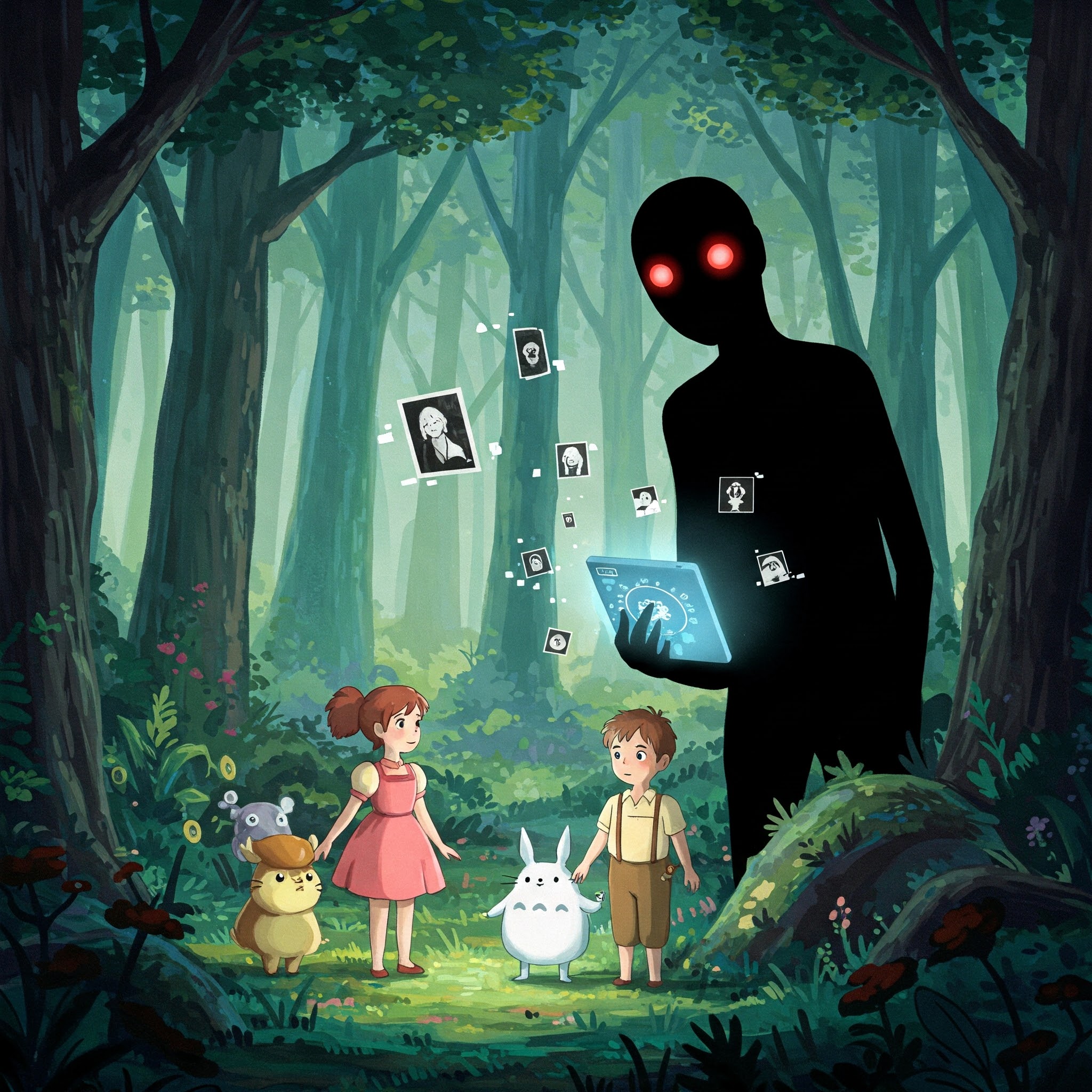Uploading your own images to AI tools that generate Ghibli-style artwork (or any AI art service) carries several privacy risks, even if the results seem harmless. Below is a detailed breakdown of the potential dangers:
1. Data Retention & Ownership Issues
- AI Companies May Store Your Images:
- Many AI platforms retain uploaded images to improve their models or for debugging purposes.
- Even if deleted by you, backups or logs might still exist on their servers.
- Example: Some AI services (like DeepAI, Artbreeder) state in their TOS that they keep user uploads for training.
- Loss of Control Over Your Image:
- By uploading, you might grant the AI company a license to use your image in ways you didn’t intend (e.g., training datasets, promotional material).
- Example: MidJourney’s old policy claimed a broad license over user inputs (later revised after backlash).
2. Facial Recognition & Biometric Exploitation
- AI Could Extract Facial Data:
- If you upload a selfie or personal photo, AI tools might inadvertently store facial features for future recognition.
- Example: Clearview AI scraped social media photos for facial recognition without consent.
- Deepfake & Identity Theft Risks:
- A Ghibli-style image may seem harmless, but the original photo’s biometric data (face shape, expressions) could be used in deepfake generation.
3. Metadata & Hidden Tracking
- EXIF Data Leaks:
- Photos contain hidden metadata (location, device info, timestamps).
- If the AI tool doesn’t strip this data, it could expose:
- Where you live.
- When the photo was taken.
- What device you use.
- Browser Fingerprinting:
- Some AI sites track users via IP addresses, cookies, or canvas fingerprinting, linking uploads back to you.
4. Third-Party Sharing & Data Sales
- AI Companies May Share Data with Partners:
- Many free AI tools monetize by selling user data to advertisers or analytics firms.
- Example: Some AI art apps (like Lensa) faced criticism for sharing data with third-party ad networks.
- Government/Corporate Surveillance:
- In some countries, AI-generated content is monitored for “suspicious activity.”
- Example: China’s AI laws require companies to report “unusual” uploads.
5. Reputation & Misuse Risks
- AI-Generated Content Can Be Misused:
- A Ghibli-style image of you could be:
- Turned into fake profiles (catfishing).
- Used in scams or fake endorsements.
- Altered into NSFW deepfakes (a growing issue with AI art).
- Permanent Digital Footprint:
- Once online, AI-generated images can resurface years later in unexpected contexts.
How to Protect Yourself
If you still want to use AI Ghibli-style filters:
- Use Anonymized Images:
- Crop out faces or use AI-blurred photos.
- Avoid uploading identifiable backgrounds.
- Check the AI Tool’s Privacy Policy:
- Look for:
- “We do not store your images.”
- “We do not use data for training.”
- Remove Metadata Before Uploading:
- Use tools like ExifTool or Windows/Mac built-in metadata removers.
- Prefer Offline/Open-Source AI:
- Tools like Stable Diffusion (local install) don’t send data to external servers.
- Avoid Free “Too Good to Be True” Apps:
- Many free AI art apps monetize by selling your data.
Conclusion
While turning your photo into a Ghibli-style image seems fun, the privacy risks are real. AI companies may store, analyze, or even misuse your uploaded images in ways you didn’t anticipate. Always assume:
- “If it’s free, you’re the product.”
- “Once uploaded, you lose control.”
For maximum safety, use offline AI tools or heavily anonymized images.
Would you like recommendations for privacy-safe AI art generators? Let me know! 🔒
Summary

Article Name
Ghibli-Style AI Art: Is Uploading Your Photo Safe? Hidden Privacy Risks Exposed
DescriptionUploading your own images to AI tools that generate Ghibli-style artwork (or any AI art service) carries several privacy risks, even if the results seem harmless. Below is a detailed breakdown of the potential dangers:
Author
UCTC
Publisher Name
UCTC.CO.IN
Publisher Logo

